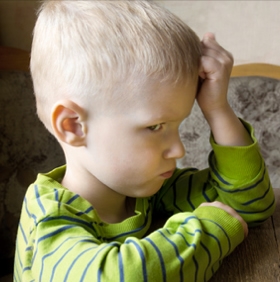Article at a Glance
Over the past few years schools have made a lot of progress preventing bullying by implementing programs and educating students and staff. But a recent report by Child Trends indicates that the roots of bullying start earlier in a child’s development—before they even start school.
By limiting our focus to only the grade school years, we are missing important opportunities in a child’s early development to teach pro-social skills and avoid factors that can contribute to bullying.
But remember that although these are some of the more common factors, it doesn’t guarantee that a child exposed to these factors will bully others or that a child who bullies has necessarily been exposed to sub-optimal parenting. Many other factors, including peers and temperament, are involved in a child’s development. The focus should be on supporting environments that discourage bullying rather than assigning blame.
Parents and primary caregivers play an important role in how likely a child is to bully others. According to research, here are a few factors that have shown to be predictors of bullying.
On the other hand, spending time together as a family seems to prevent bullying. Parents should look for frequent and positive parent-child interactions like reading, playing, or sharing meals together.
Children who have been exposed to maltreatment like physical or sexual abuse are not only more likely to bully others, but to also be victims of bullying. Exposure to abuse can change the way a child’s brain develops, creating social and emotional developmental deficits. In these situations children may also develop survival skills at home that are considered dysfunctional in other situations, or they may erroneously interrupt situations as hostile and respond with aggression.
Luckily there are factors that can reduce a child’s propensity towards bullying behavior. For example having a positive relationship with another adult or teacher and finding good friends who offer social support can help.
Research has shown a correlation between how many hours of TV a child watches a day to how likely they are to bully others, regardless of whether or not the TV programming was violent or not. However some shows like Sesame Street and Mister Roger’s Neighborhood have been shown to increase pro-social skills in children. Parents should be careful about what their children are watching to make sure it is modeling positive behavior and to be available to help provide guidance on what kinds of behaviors are appropriate.
It is not uncommon to see unkind behavior among children. They are still learning social skills, morality, empathy, and self-control. And unkind behavior is not always bullying. It is normal for young children to not want to share, to take away toys, or to exclude others. We must be careful not to over-interpret these behaviors.
Bullying is defined as repeated, aggressive behavior that reflects an imbalance of power (physical or social) between the victim and the aggressor. It can be in the form of direct physical threats, gossiping, or exclusion. Children are not capable of this kind of organized behavior until they are at least in preschool and the behavior only starts to become more consistent once children are in school.
If you are worried about your child’s aggression, you can help by modeling good behavior and empathy. For example, do you think to hold the door open for somebody who has their hands full or are you patient with a grocery clerk who has made a mistake? Is your parenting style sometimes demeaning or do you treat your children with empathy? Parents can model empathy by being aware of how they treat others and reinforcing the feelings and importance of others.
At a very young age, children can also learn that aggressive behavior is not allowed and that there will be consistent consequences for treating somebody inappropriately. If your child hits, bites or is aggressive, stay calm and respond immediately. Remove your child from the situation to calm down and briefly explain more appropriate ways to respond to frustration.
As your children get older, recognize that bullying is a behavior, not a personality characteristic. Behaviors are much easier to change and are reflective of how somebody has learned to behave rather than who they are as a person. Labeling a child as a bully only further reinforces negative behavior. Instead of criticizing your child for being a bully, help your child find ways to handle feelings of aggression and teach them that bullying is unacceptable. You will also want to look for things in the home or at school that might be triggering the behavior. If you need help working with your child or if your child isn’t responding to your guidance, seek the help of a pediatrician or therapist.
Childhood is rough. Things aren’t always black and white, and children aren’t always nice. Take a deep breath and remember that we are all still learning—and that both you and your child will make plenty of mistakes along the way. The most important thing we can do is to create a stable, loving home where everybody is treated with dignity.
